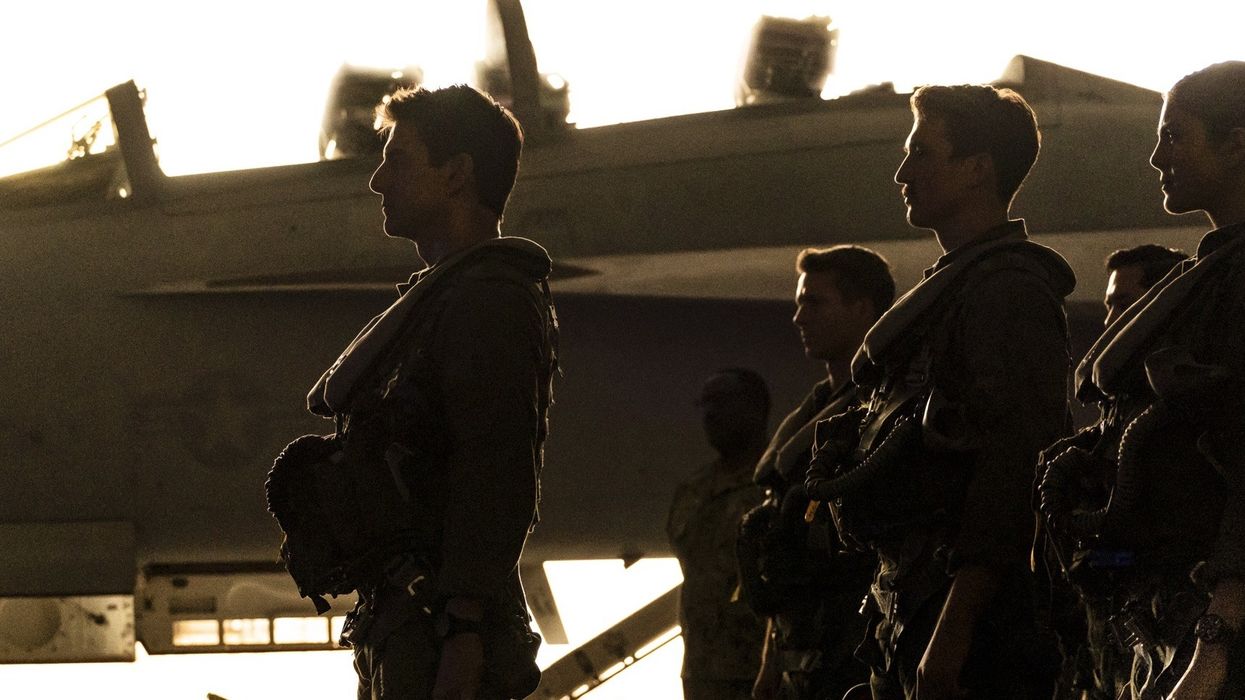How Practical Flight Techniques Were Used in 'Top Gun: Maverick'
Strap in, we're breaking the IMAX camera barrier.

Top Gun: Maverick is soaring toward a billion dollars at the box office. It's the best blockbuster we've seen in years, and Paramount looks like geniuses holding it for the entire pandemic and allowing it to be the breakout film of 2022, almost three years since the movie was initially shot and two years after it was due to come out. We've talked about the cinematography of the film and the editing already, and how it's impacted the box office.
But one of the coolest things it seems no one is talking about is how they advanced the use of IMAX cameras. Check out this featurette.
How Practical Flight Techniques Were Used in Top Gun: Maverick
Director Joseph Kosinski and cinematographer Claudio Miranda teamed up to push the boundaries of film and filmmaking. But they needed a little help from the United States Naval Air Systems Command. NAVAIR, as they are known, stepped in with two Boeing F/A-18F Super Hornet fighter jets to modify for photography, and then a decommissioned Grumman F-14 Tomcat for on-the-ground scenes.
These real jets were then flown by real pilots during the film, allowing them to get truly real fighter jet action on screen.
We all know Tom Cruise likes to work authentically, and shooting with real fighter jets is about as authentic as you can get. Kosinski and Miranda were also excited to get their hands on the planes. They provided a very unique opportunity to create one of the coolest camera rigs of all time.
Miranda expands on his design for ASC Magazine, but the general idea was shooting with six IMAX cameras inside the plane, and then a few outside. This gave them a full array of angles all at once.
So How Did They Shoot Top Gun: Maverick? And What Did They Shoot On?
Miranda came up with the idea for a six-camera setup for the F/A-18F. The basic idea was to use three standard Sony VENICE cameras. Then they would add one outfitted with the Rialto system. The Rialto allows the camera’s sensor block and lens to be separated from the body. They maintain connection via an extension cable that is pointed at the back seat. Then they used two Rialtos looking forward over the pilot’s left and right shoulder.
Again, we did an extensive breakdown of that cinematography here.

“It’s a 6K camera. So 6,000 pixels wide. It’s a large-format sensor, which is bigger than a 35mm sensor. It’s like Cinemascope, I think is the comparable film size. The real technology breakthrough is that the sensor can be separated from the recorder. When you’re looking at a digital camera, the only thing capturing the image is that first inch of the camera. Everything behind that is power and recording and cooling. So this Sony camera, which is called the Sony Venice, you can buy a version where those two pieces are connected via some fiber optic cable. So the sensor, with a very small lens, can sit in a very tight place, or right in front of the actor. We had four of them pointing at the actor on Top Gun, and the recorders could be hidden in storage spaces on the jet. So you’re able to put something that normally you’d only be able to fit a GoPro there, now you’re able to put an IMAX quality camera in that spot. And in this case six of them, so we have multi-camera coverage of these sequences that you can cut a whole scene just by working with those six angles. That, to me, was our technology breakthrough on this movie. It’s just a really fun way to work, when you’re getting it all in-camera.”
How the Actors Worked Inside Planes Doing Mach 8
Since Tom Cruise was already a pilot and had actual extensive experience filming aerial sequences, he created a Navy-approved boot camp for the actors to go through to prepare for their roles. This boot camp lasted for three months to help prepare them to be in a Super Hornet and be comfortable enough to perform these highly ambitious aerial sequences.
Once in the air, many of the reactions of the actors were completely real. They range from passing out, to puking, to just being exhilarated. And they were flying up there all the time to get their shots. Kosinski told Empire in the new issue, "Out of a 12- or 14-hour day, you might get 30 seconds of good footage. But it was so hard-earned. It just took a very long time to get it all. Months and months of aerial shooting. We shot as much footage as the three Lord of the Rings movies combined. I think it was 800 hours of footage.”
This footage was then cut together for all the aerial moments inside the movie.
Summing Up Top Gun: Maverick's Aerial Ambition
When you go into a movie like this, authenticity is key. So many blockbusters these days rely on CGI or VFX to build worlds. Actors are standing staring at tennis balls or faking reactions. It was refreshing to sit inside a theater and watch truly dedicated artisans tackle something that felt real and kept me on the edge of my seat.
Have you seen the movie yet? I think all of this prep and thinking outside the box paid off. Let me know what you think in the comments.











